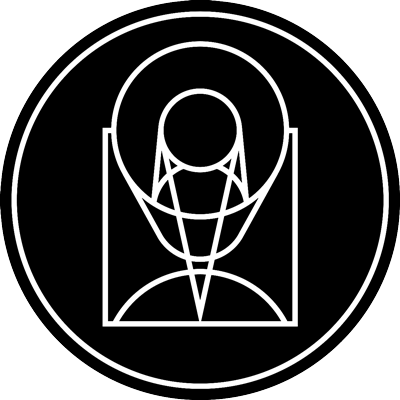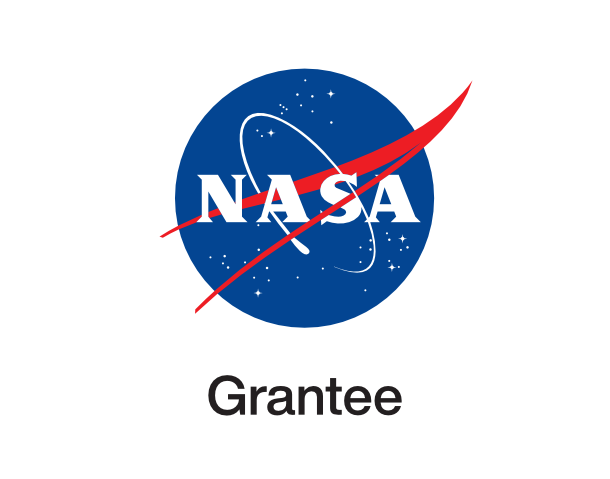Hubble View of Arp's Loop

stsci_2008-02b January 8th, 2008
Credit: NASA, ESA, and D. de Mello (Catholic University of America and GSFC;NASA, ESA, and the Hubble Heritage Team (STScI/AURA)
A Hubble Space Telescope image of an area in the neighborhood of the interacting galaxies, M81 and M82, which lie 12 million light-years away in the constellation Ursa Major. The gravity from each galaxy dramatically affected the other during their last close encounter, 200 million years ago. Gas density waves rippling around M81 make it a grand design spiral. M82 is undergoing a starburst at its core, creating glowing fingers of hydrogen. The visible light Hubble image shows bright blue star clusters found along a wispy bridge of gas that was tidally stretched between the two galaxies, and a third companion galaxy. Turbulence in the normally low-density gas may have enhanced the density locally to trigger starbirth. The so-called "blue blobs" are clumped together in a structure called Arp's Loop. Hubble reveals the clusters contain the equivalent of five Orion Nebulae. Hubble's Advanced Camera for Surveys imaged the region in blue and infrared light in September of 2006.
Provider: Space Telescope Science Institute
Image Source: https://hubblesite.org/contents/news-releases/2008/news-2008-02
Curator: STScI, Baltimore, MD, USA
Image Use Policy: http://hubblesite.org/copyright/

- ID
- 2008-02b
- Subject Category
- C.5.2.2
- Subject Name
- Arp's Loop, A0952+69
- Credits
- NASA, ESA, and D. de Mello (Catholic University of America and GSFC;NASA, ESA, and the Hubble Heritage Team (STScI/AURA)
- Release Date
- 2008-01-08T00:00:00
- Lightyears
- 12,000,000
- Redshift
- 12,000,000
- Reference Url
- https://hubblesite.org/contents/news-releases/2008/news-2008-02
- Type
- Observation
- Image Quality
- Good
- Distance Notes
- 12 million light-years (3.6 Megaparsecs)
- Facility
- Hubble, Hubble
- Instrument
- ACS, ACS
- Color Assignment
- Blue, Red
- Band
- Optical, Optical
- Bandpass
- g, I
- Central Wavelength
- 475, 814
- Start Time
- 2006-09-22T00:00:00, 2006-09-22T00:00:00
- Integration Time
- Dataset ID
- Notes
- G
- Coordinate Frame
- ICRS
- Equinox
- J2000
- Reference Value
- 149.3752491, 69.2787976
- Reference Dimension
- 2586.0, 1935.0
- Reference Pixel
- 1294.0, 968.5
- Scale
- -1.3902e-05, 1.3902008e-05
- Rotation
- 31.32
- Coordinate System Projection:
- TAN
- Quality
- Full
- FITS Header
- Notes
- WCS retrieved using CXCs PinpointWCS
- Creator (Curator)
- STScI
- URL
- http://hubblesite.org
- Name
- Space Telescope Science Institute Office of Public Outreach
- outreach@stsci.edu
- Telephone
- 410-338-4444
- Address
- 3700 San Martin Drive
- City
- Baltimore
- State/Province
- MD
- Postal Code
- 21218
- Country
- USA
- Rights
- http://hubblesite.org/copyright/
- Publisher
- STScI
- Publisher ID
- stsci
- Resource ID
- STSCI-H-p0802b-f-2586x1935.tif
- Resource URL
- https://mast.stsci.edu/api/latest/Download/file?uri=mast:OPO/product/STSCI-H-p0802b-f-2586x1935.tif
- Related Resources
- http://hubblesite.org/newscenter/archive/releases/2008/02
- Metadata Date
- 2022-07-06T00:00:00
- Metadata Version
- 1.2
Detailed color mapping information coming soon...













